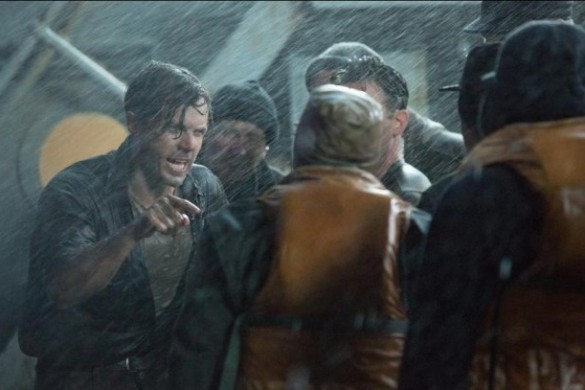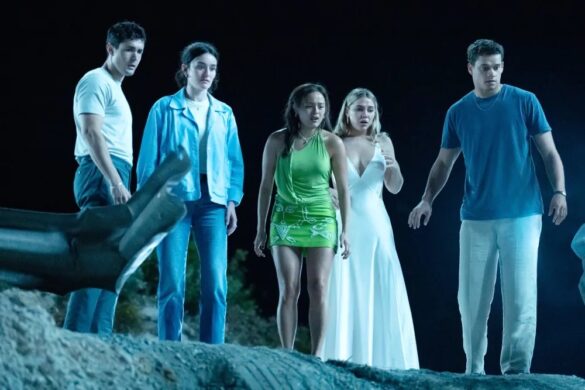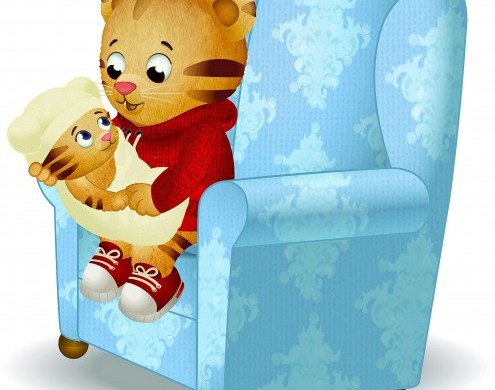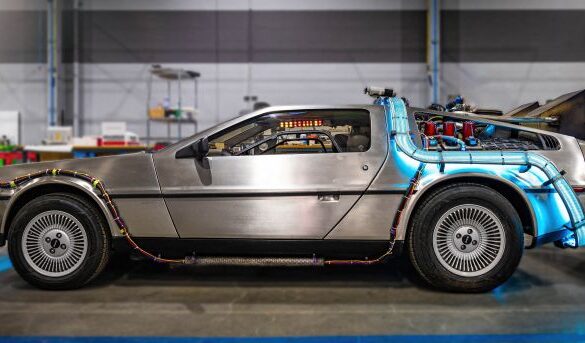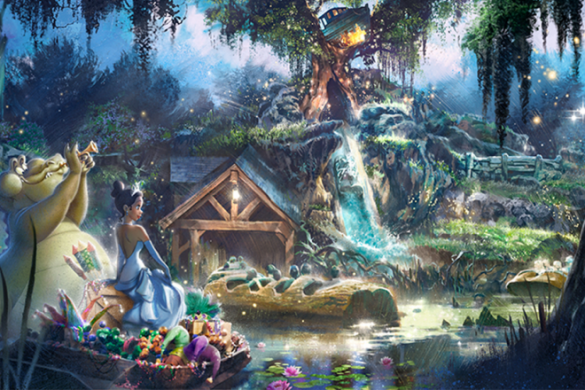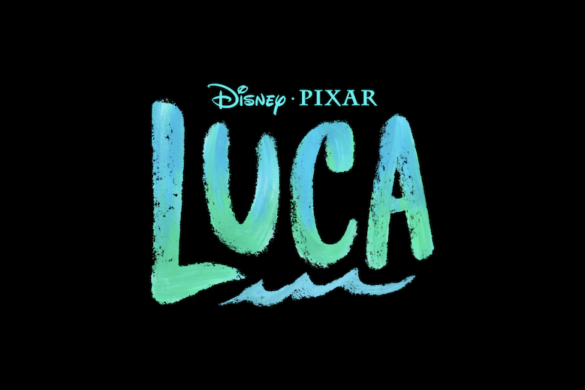Jordan Peele effectively changed the way audiences see horror films for the better. Each of his efforts is a social commentary on race and modern-day America. And it is through those complex themes that we can see the Black experience while also being scared at how much these horrors parallel the world we live in today. So, it was exciting to see how he’s evolved as a filmmaker with Nope, a sci-fi horror film that evokes a love for Steven Spielberg’s Close Encounters of the Third Kind but reflects upon a culture obsessed with spectacle and attention.
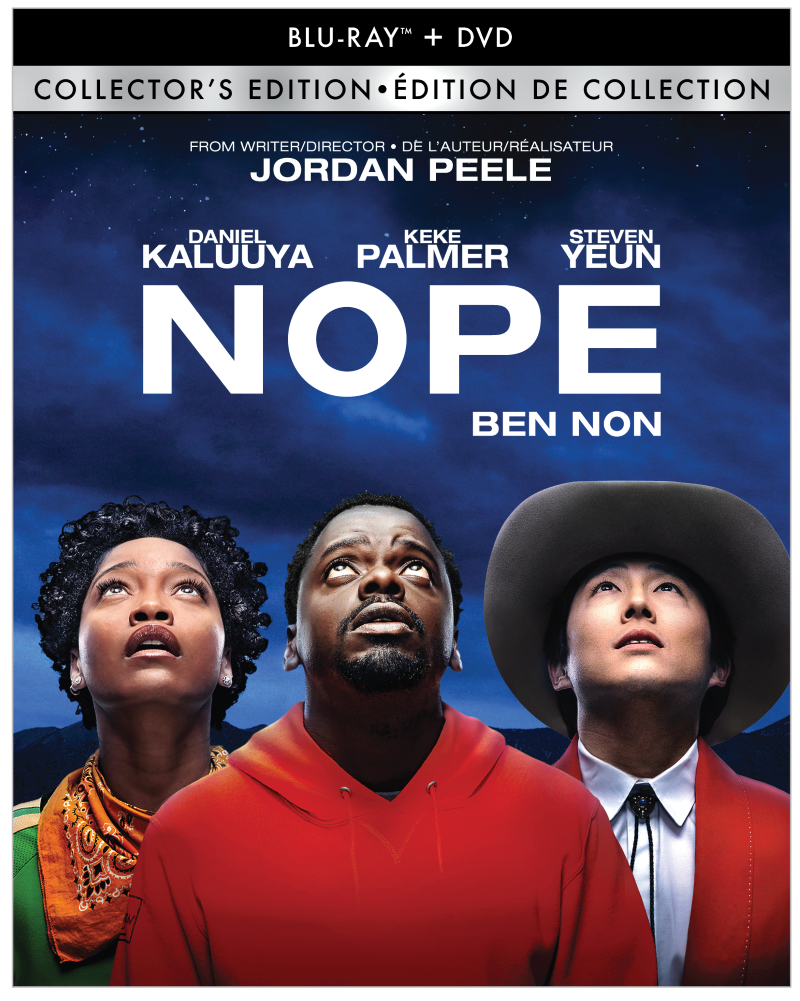
For the review purposes of the home entertainment release, we will forgo the usual review of the film – but if you want to read my first initial thoughts, check out my review of the theatrical release. In short, Nope is a film that you might not like at first, but it will grow on you with every new viewing experience. Daniel Kaluuya and Keke Palmer are absolute standouts in sci-fi horror that celebrates the strength and love of Black siblings coming together to do the impossible and capture evidence of a flying saucer on Earth. Of course, since this is a horror film directed by Peele, there are sociopolitical messages about exploitation for entertainment and how we are starved for the art of the spectacle and attention in the age of social media.
With the release of Nope on Digital and physical media forms, this review looks at the three bonus features. First, deleted scenes provide additional context that helps inform us about Emerald (Palmer), her various side hustles, and how it all ties into her need to be seen. We also get a different perspective on the Gordy attack. Plus, the gag reel shows how much fun one can have while working with live horses.
But the real gems of the Nope home entertainment release are in the “Shadows: The Making of Nope,” “Call Him Jean Jacket,” and “Mystery Man of Muybridge” featurettes.
Running at 55:48 minutes, “Shadows The Making of Nope” explores Peele’s filmmaking process. Each of his efforts is personal, and to crack the essence of a script, he has to apply it to himself and understand what he wants to communicate to himself with the script. Peele wanted to recapture watching pure movie magic that he experienced when he was younger. And that mystery, intrigue, and trying the make sense of the story not only is what drew Kaluuya and Palmer to the story, but it also aligns with the film’s themes of exploitation.
In “A Little Island,” producer Ian Cooper talks about how the Gordy attack sequence, one of the film’s first scenes, is a potent metaphor for the layers of exploitation. As the audience, we are watching Jean Jacket and tracking its behavior. Similarly to Gordy, an unpredictable animal lashes out when provoked. “I think the D.N.A. of the movie has this big question about the human addiction to spectacle and what happens when money becomes involved in that,” Peele said. “There’s massive exploitation of what should be pure and what should be natural.”
We also hear from the director of photography, Hoyte Van Hoytema, how important it was that two creative powerhouses have crews who want nothing but to achieve their creative vision.
Additionally, Peele talks about some resentment people have towards the sitcom energy and the exploitation of being told when to laugh. But the joke is that despite the horrific sight of an animal attacking the cast, the hope is that the audience walks away, not hating Gordy. Because the Gordy attack scene ties directly to the themes of what happens when you try to wrangle a wild animal for entertainment, spectacle, or attention.
The chapter also gives Terry Notary, who plays Gordy, a chance to share his artistry in only becoming Gordy and creating the scene. As the chapter dives deeper into filming the scene, Peele talks about how Gordy and young Jupe (Jacob Kim) share a similar experience of playing dress up and putting on the show for the world. “That moment is the reason we probably understand him,” Peele said.
From “A Little Island,” we go to “The Embodiment of O.M.G.,” where the chapter explores the various actors and departments’ responsibilities in creating the many O.M.G. moments we see in the film. For example, we see how the team revived a closed-down Fry’s in Burbank, California, by filling it with over 7500 monitors and T.V.s and then creating the content that appears on those screens. If you are unfamiliar with the business, each storefront has a unique personality and theme, and the one in Burbank had a crashed U.F.O. affixed to the storefront. “I am so inspired by filmmakers who have dedicated themselves to a vision that was impossible to achieve and gone and pulled it off,” Peele said. “I tried to write a script I didn’t know how to pull off and assembled a team to help me pull it off. We are in a movie-making zone that feels like this is how movies are supposed to be made.”
In the chapter, Kaluuya and Palmer talk about how they were approached to do “Nope” and their respective excitement to be a part of it. They also shared their thoughts on their characters. O.J. is more reflective and in tune with the horse and the family business, while the charismatic Emerald knows the art of the hustle and doesn’t have too much discipline or filter. And while “Nope” captures the beauty of siblings’ reconnection despite a tragedy, we also see how Angel’s (Brandon Perea) loneliness connects with the film’s exploration of one’s need for attention. Perea’s audition was so impressive that it forced Peele to rewrite some of the script.
On the artisans’ side of things, Cooper shared what formulated his search for a production designer. As he put it, he wanted someone that worked with Terrance Malik, P.T. Anderson, and David Lynch but has also dealt with the uncanny and hyperbole with a sense of roundedness. That is how they landed with Ruth De Jong, a production designer who hadn’t worked on a horror movie until now. “I only hoped that, they maybe, just maybe, they’d let us shoot on 35 [mm] to capture this backdrop,” De Jong said. “And then when you add someone like Hoyte [Van Hoytema] to the equation, he’s like, ‘how about let’s go for 65[mm]? Oh, and in IMAX, because why not.”
So, Peele had his team create this world. But now it was time to honor “The Legacy of Haywood” by looking at the filmmaking process. So the featurette reveals how “B” camera operators like Kristen “K2” Correll uses bulky IMAX cameras to capture specific moments in the film.
Additionally, Peele talks about the theme of family, legacy, orphans, and what it means to come home. Speaking about Keith David’s character, who plays the patriarchial Haywood, Peele said, “He’s meant to be somebody who has the discipline of O.J. but also the charisma and spark of Emerald. So without him there, it’s almost like we need both pieces of that puzzle in order to carry on the legacy of Haywood.”
So it was important to build a house that the characters wanted to preserve and protect. And the other set piece at the center of the film is the U.F.O., a vicious beast you do not want to find yourself in. So, we get to see the process of creating the terrifying imagery of having a U.F.O. that devours life hanging above you and the metaphors of having it spit out a horse statue and landing right where O.J.’s father died.
In “A World within a World,” Peele talks about forming Jupe with actor Steven Yuen. “Originally, I don’t think it was written perhaps for an Asian-American as myself,” Yuen said. “So we would have to rework what would be a little bit more authentic and true to that experience.” And part of that was exploring the character’s drives and motivations, as well as the traumas within him that aren’t exclusive to being a Korean-American but a child star.
The actual Jupiter’s Claim, built at ¾ scale, was practical and gave the world a tangibility that we rarely see in these sci-fi films. There’s an actual petting zoo, a gold panning station, an assay office, a bank where you can exchange your gold for Jupe Jangle, and a functioning steam train. And if you look down the valley, you’ll see the oak tree that belongs to Haywood Ranch, which helps us establish the proximity of these two worlds and how massive Jean Jacket is.
And Cooper talks about the insidious nature of theme park guests having to work to make enough money to purchase the goods like photos, candy, or anything else. Peele calls it a “satire of the American Dream.” Yuen says Jupiter’s Claim is more of a fever dream for Jupe and likens it to a prison that he cannot get out of.
For “Chasing the Spectacle,” the cast and crew talk about the characters’ approach to wrangling the “spectacle” and ultimately giving the “spectacle” a sense of groundedness by treating it as an animal that devours and moves unpredictably. But, the behind-the-scenes team first needed to map out Jean Jacket’s movements and what that meant for the E.M.P. radius.
The chapter even explains how the sky dancers were more than just a detection system and lures. Instead, they represented the exploitation of what is beautiful and natural and the human imprint of the environment.
Peele admits that “Nope” isn’t so much about race. Although, however, race plays into the themes of spectacle and exploitation, “the movie in itself is meant to be an original piece of content with a big budget, starring people of color, directed by a person of color, and some crazy shit in it,” he said.
“‘Nope’ is about the spectacle,” Palmer said. “It is about the thing we have, all of us have, in chasing something outside of ourselves or focusing on something that’s far outside of ourselves, so much so that we don’t realize what we have around us that is worth appreciating until it’s too late.”
The love that you were looking for. The validation that you were looking for. The security that you were looking for. It was always there,” Palmer says about “Nope’s” themes. “It was always within you at home, with your family.”
Kaluuya says he hopes you have a good time being a part of O.J. and Em’s journey in Nope. “Suspend yourself and be there. Be present,” he said. “What you take out of it is what you take out of it, and that is more interesting than what I could ever project upon.”
Moving on to the “Call him Jean Jacket” feature, we hear Peele talking about his desire to make the quintessential U.F.O. movie. “It’s hard to pull because it’s got this huge canvas that is the sky that you have to take into account,” Peele said about using the practical and natural settings. “What if it is not a ship? What if it is what U.F.O. enthusiasts call a critter? What if it is really just an eating machine?”
Peele compared the animal to something that doesn’t give a f*** and just wants to devour. But we also wanted to empathize with it, considering that it was also a living organism.
As such, to help give Jean Jacket a sense of believability, the design team used Robert Mapplethorpe’s photographs of Orchids as a reference. It evoked the fabric and soft material that we see in Jean Jacket. Eventually, they looked to Mobert Morris’ fabric photography as a secondary reference point, as well as Marilyn Monroe’s famous “Seven Year Itch” photo of her above the subway grate and ships with enormous sails.
So to transform the classic U.F.O. ship into something unusual and strange, the visual effects team researched jellyfish at CalTech. Peele was particularly interested in Jean Jacket’s flight. As such, since jellyfish are 90% water, jellyfish are the perfect organisms to use as a reference point to give off a sense of flotation and density.
It’s impressive to see how far Peele and the rest of the team were willing to go to make Jean Jacket as real as possible. First, this means going to Kelsi Rutledge, a scientific consultant and Ph.D. researcher at UCLA who helps name new species and studies their functionalities. “My main role was debuting Jean Jacket to the scientific community in the form of a scientific manuscript,” she said. “I had to describe every inch of the creature, and anatomical detail, as well as behavioral detail in the manuscript that we are creating. And so we decided to name Jean Jacket, Oculonimbus edoequus. This translates directly to hidden dark cloud stallion eater. Edo is eat, and equus comes from the Latin word equi, which translates to horses of stallion.”
In its U.F.O. form, Jean Jacket looks like a sand dollar right down the to lateral notches on the side. And it’s square eye is inspired by the eyes of an octopus.
But the sound of Jean Jacket was just as important as its visuals. “Every sound that Jean Jacket makes has a reason,” Peele said. The idea is to help Jean Jacket understand its surroundings, like echolocation, and draw a human’s attention to the sky. The other bellowing sound is to exert dominance. While the final one, as it transforms, has a whimsy feel.
To give Jean Jacket animalistic characteristics, Peele and his team would have a methodology meeting to help understand how it would move and what that would mean for the E.M.P. radius.
For Michael Abels, he had to create a new kind of music that would align with the spirit of the film and what it represented metaphorically. For the characters, it was something they think they saw and then transformed it into something that is scary and unknown, yet fascinating. “I rely on a battery of different instruments and things people don’t think as instruments to create that magic,” he said. As such, we get to see the different “voices,” as Abels puts it, that are represented in the film, from the scary and ominous in the brass to the awe and wonder.
And finally, Peele talks about mythologizing the mysterious rider in the Muybridge clip we see in “Nope” during that “Mystery Man of Muybridge” feature. In the film, sequential photographs from the 19th century depicting a horse in motion serves as a bit of exposition tha helps establish the Haywood legacy, as the rider is OJ and Emerald’s great great grandfather.
In actuality, the rider is unknown, but photographer Eadweard Muybridge captured the series of photographs. His photographs and book “Animals in Motion” helped lay out the groundwork for modern day filmmaking. And the “Mystery Man of Muybridge” feature centers on that historical context while also linking it to some of the film’s larger themes of representation and family.
“Nope” is available on all home entertainment formats including DVD, Digital, Blu-ray, and 4K.
Here’s the full list of special features for “Nope,” some of which may not be included in all formats.
- SHADOWS: THE MAKING OF NOPE* – Unpack the meaning of NOPE with Jordan Peele. Secrets are revealed with this 56-minute immersion exploring the film’s unanswered questions, taking you on an intimate journey inside every aspect of production and offering a detailed look at Peele’s revolutionary filmmaking process.
- DELETED SCENES – Watch five unreleased scenes from NOPE
- GAG REEL – A highlight reel of bloopers and outtakes featuring main cast
- CALL HIM JEAN JACKET – The object of the Haywood siblings’ fascination is an entity known only as “Jean Jacket.” Filmmakers provide insights into the conception, design, and execution of this mysterious organism.
- MYSTERY MAN OF MUYBRIDGE – A deep dive into THE HORSE IN MOTION by Eadweard Muybridge, its relationship to the Haywoods, and how it relates to the larger themes in NOPE.
- *Not on DVD


